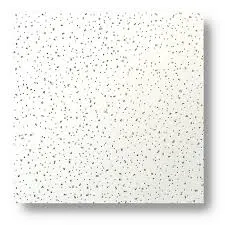Nov . 16, 2024 09:32 Back to list
pvc gypsum board
The Rise of PVC Gypsum Board A Revolution in Construction
In recent years, the construction industry has witnessed significant advancements in materials used for building and interior design. One of the most innovative products making waves is the PVC gypsum board. Combining the properties of traditional gypsum boards with the versatility of polyvinyl chloride (PVC), this new material offers a host of advantages that are appealing to builders, architects, and homeowners alike.
What is PVC Gypsum Board?
PVC gypsum board is a type of building material that integrates gypsum, a mineral known for its fire-resistant and insulating properties, with a layer of PVC. This combination results in a lightweight, durable panel that can be used for walls, ceilings, and partitions. The outer layer of PVC provides additional waterproofing and enhances the aesthetic appeal, allowing for a variety of colors and finishes.
Key Benefits
1. Durability and Strength PVC gypsum boards are resistant to cracks and damage when compared to traditional gypsum boards. The PVC layer adds to its resilience, making it ideal for high-traffic areas or spaces that require frequent cleaning.
2. Water Resistance One of the standout features of PVC gypsum board is its excellent water-resistant properties. Unlike conventional gypsum, which can be compromised by moisture, PVC gypsum board can withstand humidity and exposure to water, making it a perfect choice for bathrooms, kitchens, and outdoor applications.
3. Fire Resistance Gypsum is naturally fire-resistant. The incorporation of PVC does not negate this property; instead, it enhances the overall fire safety of the material. This makes PVC gypsum board a preferred choice in areas where fire safety is a primary concern.
pvc gypsum board

4. Aesthetic Versatility PVC gypsum boards come in a range of colors, textures, and finishes. This versatility allows designers to create stunning interiors without sacrificing functionality. Whether it’s a sleek modern office or a cozy residential space, PVC gypsum board can adapt to diverse design needs.
5. Ease of Installation The lightweight nature of PVC gypsum boards simplifies the installation process. They can be cut easily, and due to their less cumbersome size, they require fewer man-hours to install, reducing overall labor costs.
6. Sustainability With growing environmental concerns, PVC gypsum boards have also garnered attention for their eco-friendly potential. Many manufacturers are focusing on recycling PVC materials, contributing to waste reduction in the construction industry.
Applications in Modern Construction
The applications of PVC gypsum board extend beyond residential projects. They are increasingly being used in commercial spaces, schools, hospitals, and industrial facilities. Their lightweight and durable nature makes them suitable for a variety of architectural styles while ensuring safety and functionality.
In addition to interior uses, PVC gypsum boards are being explored for external applications due to their waterproof properties. This versatility allows for creative architectural designs that create a perfect balance between aesthetics and practicality.
Conclusion
The development of PVC gypsum board represents a significant milestone in construction material innovation. Its unique combination of durability, water resistance, fire safety, and aesthetic versatility addresses many challenges faced in traditional building practices. As the demand for high-quality, sustainable building materials continues to rise, PVC gypsum boards are poised to become a widely accepted choice in both residential and commercial construction projects. Looking ahead, it is clear that PVC gypsum boards will play a crucial role in shaping the future of architectural design and building practices worldwide.
-
Quality Ceiling Trap Doors & Access Panels | Easy & Secure AccessNewsAug.30,2025
-
Durable Ceiling T Grid Systems | Easy InstallationNewsAug.29,2025
-
PVC Gypsum Ceiling: Durable, Laminated Tiles for Modern SpacesNewsAug.28,2025
-
Pvc Gypsum Ceiling Is DurableNewsAug.21,2025
-
Mineral Fiber Board Is DurableNewsAug.21,2025
-
Ceiling Tile Clip Reusable DesignNewsAug.21,2025







